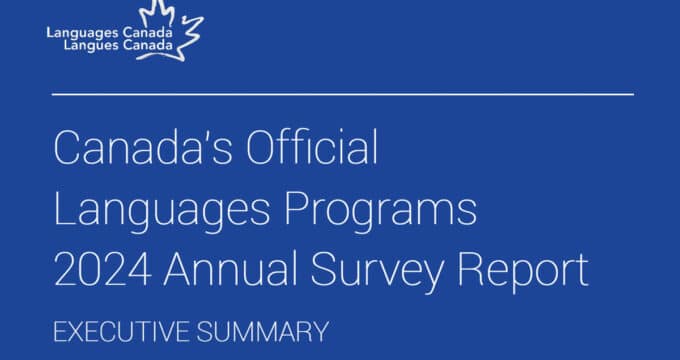The right score: Best practices for setting and assessing English proficiency requirements for admissions
This special feature is sponsored by Cambridge English.
In December 2024, a BBC investigation kicked off a firestorm of controversy in the United Kingdom. "Universities enrolling foreign students with poor English, BBC finds," read the headline. The resulting press coverage argued the point back and forth with plenty of commentary on all sides.
As international student numbers surged in the years after the pandemic, similar press inquiries have played out in other major study destinations. And they often settle on one central question: "What is the correct admissions requirement for English proficiency?"
You might think that there is a straightforward answer – a magic number of some sort – but the sheer variety of proficiency tests, and the correspondingly wide range of academic programmes on offer, makes working out the right score for academic admissions more complex than you might guess. The good news is that there are many resources, plenty of data, and lots of guidance for admissions teams working to set or review English proficiency requirements.
A recent webinar, hosted by ICEF and featuring expert panelists from Cambridge English and Cardiff University, explored the topic at length.
Part of the challenge here arises from the fact that the stakes are really high. The purpose of the English proficiency requirement – that is, the test score that applicants must achieve for admission – is to reflect the minimum level of English ability that a non-native speaker will need to academic success at their chosen institution. By establishing an effective standard, institutions can admit students who are better prepared to perform well in their studies and to graduate.
"However," cautions Dr Hye-won Lee, Senior Research Manager with Cambridge English, "if this threshold is set too low, students may struggle to keep up with their coursework. This may lead to higher dropout rates from the perspective of the institution or instances of academic misconduct as students may attempt to compensate for their language difficulties. Therefore setting an appropriate threshold is essential for maintaining academic integrity, upholding the institution's reputation, and also fostering a thriving learning community in general. Needless to say, this has a material impact on student well-being as well. Students who are better prepared to succeed in their studies are also better able to make connections with instructors and peers and to more fully become a part of the campus community."
How universities decide
Sally Rutterford, the Head of Admissions and Deputy Director at Cardiff University, made it clear during the webinar that universities take this question seriously. She described an extensive process of research and deliberation at Cardiff when evaluating proficiency tests and setting admissions thresholds.
This includes an examination of test validity data, an evaluation of correspondence to other tests or to well-established frameworks like the Common European Framework of Reference for Languages (CEFR), and a careful review of security measures. The entire process leads to formal recommendations with respect to overall test score requirements as well as "subscores" for reading, writing, speaking, and listening. Those recommendations are in turn scrutinised by a committee composed of senior admissions staff and faculty, before any proficiency requirements are formally adopted.

Dr Lee cautions that there is no such thing as a magic number that works for all programmes or all institutions. She adds that, "It's essential to consider the specific demands of your context including the types of language use tasks involved, such as let's say writing a lab report or giving a presentation and also the level of English proficiency needed to complete those language use tasks successfully. So for example, disciplines that require advanced linguistic skills such as the discipline of law or fields where clear communication is critical to safety, such as medicine and nursing. So those disciplines typically set higher or should set higher proficiency thresholds. But in contrast, disciplines with maybe slightly lower language demands can establish a more moderate minimum requirement."
"A lot of it depends on the programme and what you are studying along with the length of that programme," adds Ms Rutterford. "Intensive courses, 12-month masters, your level of English will probably need to be at a higher standard than it would for a three or four year undergraduate degree. Also, there are different needs and requirements based on, for example, if you're doing a creative writing course, it's going to be very different from your English language needs for a mathematical or science-based programme. You need a standard across a suite of programmes rather than a standard across the whole institution."
Testing providers typically offer extensive, evidence-backed references and recommendations for institutions that are adopting a new test or reviewing test settings. But some research in the field that institutions may nevertheless choose to deviate from those recommendations.
An April 2025 research report from IELTS found that "the minimum required scores set by universities and professional bodies often don’t align with the recommendations of test developers…For starting a ‘linguistically demanding’ academic course…an IELTS 7.5 band score is recommended, representing an ‘acceptable’ level of English proficiency. A band score of IELTS 7.0 is deemed ‘probably acceptable’. The report’s data shows the average minimum score set by universities was IELTS 6.6, deemed ‘English study needed’. Some universities set a minimum score as low as IELTS 5.0."
"This research again underscores the importance of raising awareness about setting appropriate thresholds and making full use of the support and resources provided by test providers," says Dr Lee.
Finding the right score
Cardiff's approach provides something of a best practice model for institutions when it comes to setting those English requirements for admissions.
Justin Rodford, Senior Recognition Manager at Cambridge English, recommends that institutions "gather together a working group from the admissions team, the international office faculty, especially if it's a new programme or a new test. Work out what the level of English is required for that course. Look at the evidence that they've already got, and then set the appropriate requirements."
He adds that, "Institutions really need to ask test providers for evidence. There are so many new tests coming onto the market and if the test is robust, if it's valid, test providers will be able to provide a body of evidence backing that up that the test is doing what it's supposed to be doing – that it is testing what it's supposed to be testing and that the test is appropriate for an academic setting."
Cambridge English, for example, provides extensive test data for institutional review, including by programme area and student nationality. And it provides as well a range of supporting resources, including a detailed guide to support institutions in setting English proficiency admissions requirements. Those types of supports are invaluable building blocks in a process of establishing or reviewing the right score for academic admissions.
For additional resources on setting test score thresholds for admissions, please visit the Cambridge English website.
















